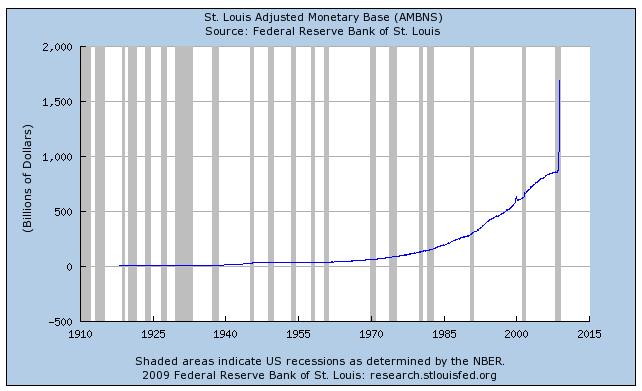
Remember this jewel I posted back in JAN? Well, our friends who live in America's Hat are not all that happy.
Helicopter Ben Bernanke’s Federal Reserve is dropping trillions of fresh paper dollars on the world economy, the President of the United States is cracking jokes on late night comedy shows, his energy minister is threatening a trade war over carbon emissions, his treasury secretary is dithering over a banking reform program amid rising concerns over his competence and a monumentally dysfunctional U.S. Congress is launching another public jihad against corporations and bankers.End of America? No - the Argentization of America? Perhaps.
As an aghast world — from China to Chicago and Chihuahua — watches, the circus-like U.S. political system seems to be declining into near chaos. Through it all, stock and financial markets are paralyzed. The more the policy regime does, the worse the outlook gets. The multi-ringed spectacle raises a disturbing question in many minds: Is this the end of America?
What is this Argentization thingy? Glad you asked.
Those steeped in history can best predict the future. George Santayana said “He who does not understand history is condemned to repeat it.”Know history - this has all been done before. Nothing is a perfect parallel, but economics, like war, in its core principals - it has not changed.
Argentina, at its peak was the fourth wealthiest country in the world. That’s right, Argentina, now just one of any number of Latin American economic basket cases. In the case of Argentina, the once mighty have fallen quite far.
Argentina was once considered a model of economic prosperity, prudence and management. Its people enjoyed an incredible standard of living. Out of 38 million people, 20 million are of Italian descent. Argentina was a place immigrants wanted to go, much like America. It was a land of promise and opportunity.
Of course, like the rest of the world, Argentina was crushed during the 1930s. It began to recover during World War II when renewed global economic activity pushed up prices for Argentine goods. Then came Juan Peron.
Peron began an economic program that nationalized much of Argentina’s industry. He also began massive public spending programs that were ill advised. He threw up trade barriers. All of this was done in the name of making Argentina economically independent and prosperous. What followed was a disaster.
Argentina began periods of stagflation and massive recessions. The country became a serial defaulter on its debt. This debt became so overwhelming that the government, after Peron left, was forced to raise taxes to a level that destroyed business activity. The country was ruined by populist policy, over spending and ruinous trade barriers.









No comments:
Post a Comment